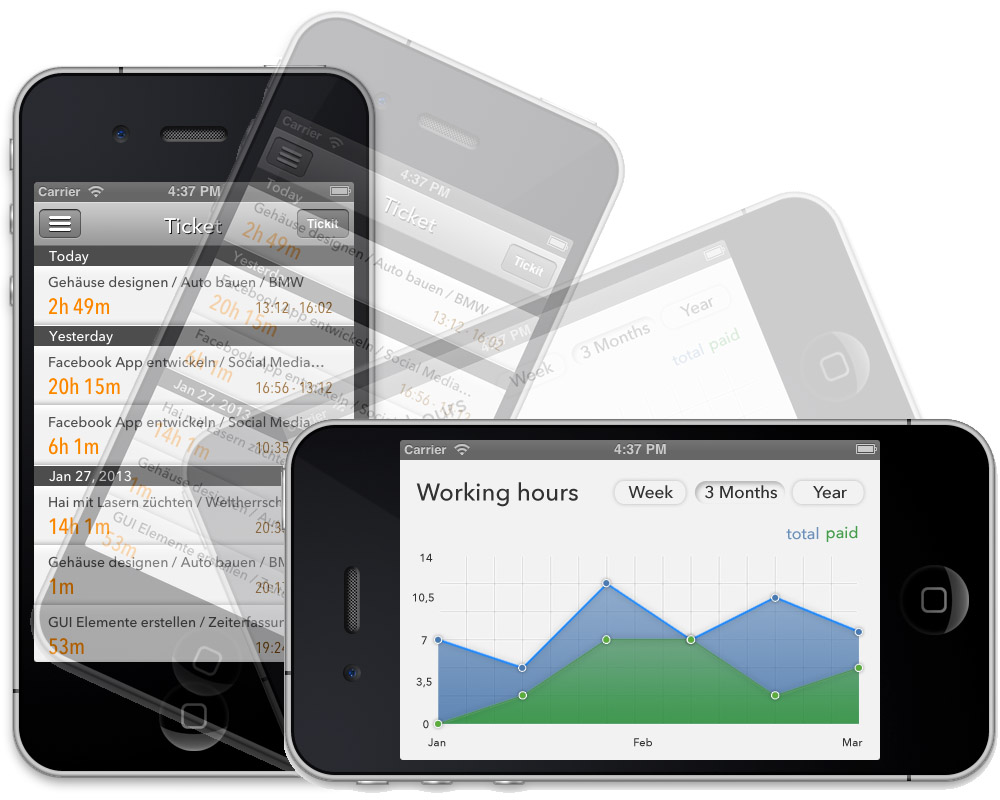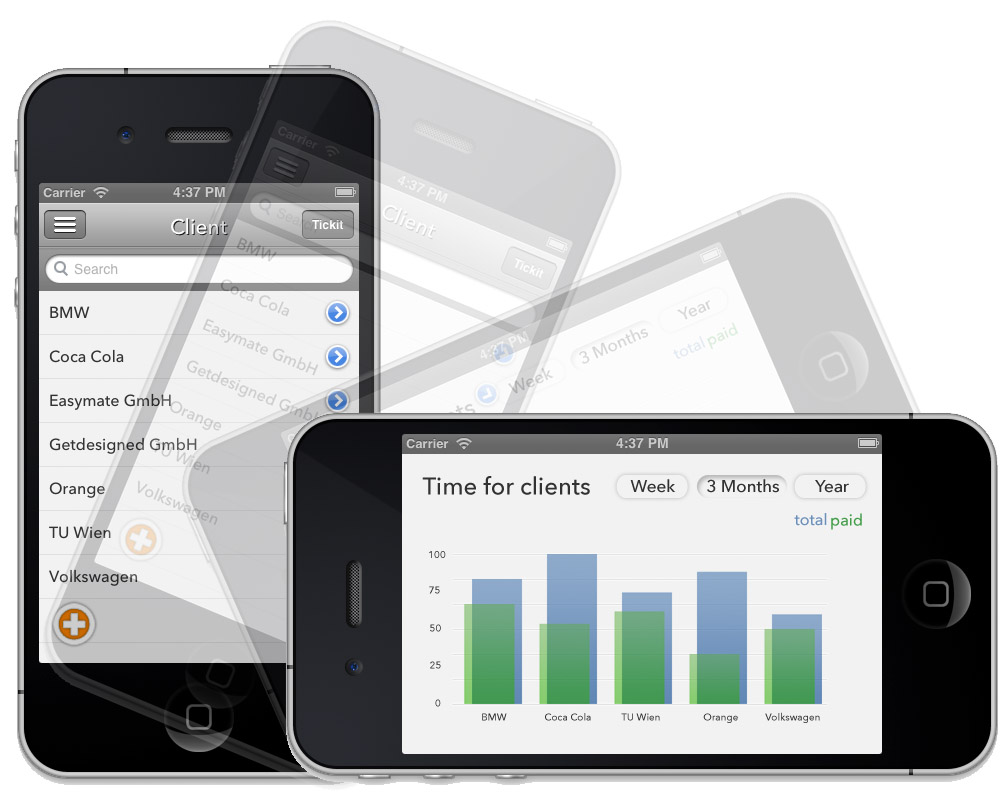Tickit: Interactive Visual Interfaces for Mobile Time Tracking
Problem
Nowadays, digital time-tracking is the de-facto standard for recording and managing working hours for knowledge workers such as software developers, architects, graphics designers et cetera. Regardless of whether the worker is an independent freelancer or an employee of big company, time tracking has become an essential part of day to day business. The obvious importance of this task resulted in countless time-tracking systems pursuing different goals.
In most cases workers start some sort of ticket or to-do assigned to a client or company when they work on a specific task. When this task is finished, the time needed is booked to this specific ticket or ToDo. This type of workflow is fine for most use cases and sounds absolutely reasonable in theory. Unfortunately most Time Tracking Tools ignore the fact that job-profiles and the requirements for such time-tracking tools are changing. One cannot necessarily assume that a worker has a static working place with a desktop computer that is connected to some sort of internal network. It is not even assured that a worker has permanent access to a computer at all to track his working hours. For instance he/she could be visiting an external client for a presentation. This example shows that that there is an obvious need for mobile time tracking systems. This service has not always been possible but since the breakthrough of powerful and highly interactive mobile devices like smartphones and tablets more and more people have constant access to the internet.
These portable devices, with their unique capabilities, offer the opportunity to revisit the context in which time-tracking systems are being used.
The goal of this project is to develop a concept and an interactive prototype for a timetracking systems for smartphones. This does not mean, that a existing time tracking tool should just be ported to a smaller screen. This project focuses more on the context in which smartphones are used and how their unique capabilities such as location-based services can be used to make time tracking easier and more engaging.
Aim
This time tracking software should distinguish itself from the sea of time-tracking tools by focusing on the context and the unique capabilities of mobile devices to engage the user in a time tracking experience that provides a new way of recording and managing working hours in real world application. One major part of this project was evaluating already existing software and carrying out a contextual inquiry to provide information about the mobile context. With the results of the problem analysis and the contextual inquiry a clickable prototype was developed using low fidelity Mockups. This served as a solid base for the implementation of the prototype. After the implementation an informal usability test followed which offered insight on how the software was used in real life.
Further information
Damir Dizdarevic




